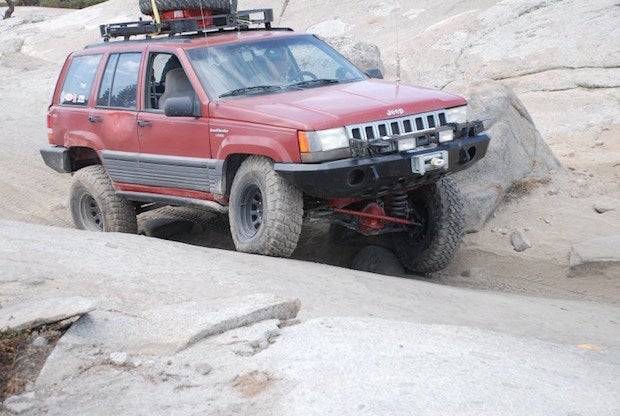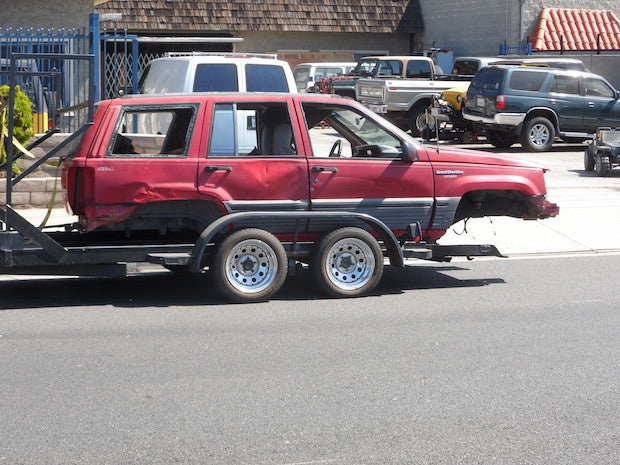How to Know When to Retire Your 4x4 Vehicle
We know it's hard, but sometimes, it's the right thing to do

It's a challenge every four-wheeler faces at some point: Should you hold onto your current vehicle or replace it?
If you're like most four wheelers you'll hang on as long as possible. Something breaks, and you replace it. Another part snaps, and you head to the store. Or you take the vehicle to the shop. This goes on ad infinitum, which is Severin-speak for "way too long." Adding to the conundrum is that you're probably really attached to your vehicle.
READ MORE: Six One-Hour Off-Road Fixes You Can Do At Home
Have you gone vehicle blind? Being so accustomed to fixing things that you lose sight of the big picture. Do you keep sinking money into what really is a sinking ship?
Money, of course, always plays a big role. At the time it seems cheaper just to fix the vehicle. But at some point you begin to question this process (or you should). You know that over time parts become more difficult and expensive to acquire. Every model year manufacturers make tweaks to their vehicles. These can be subtle or significant. As is the case with computers, there comes a time when technology passes you by. Then what?
Hey, I've been there. More than once. One thing I discovered is that there are always options. Sometimes you can find a similar (but newer) model and transfer parts. However, you must be open to the possibility of upgrading.
I know what it's like to go through this process. It's not easy. Just like you, I can get attached to a particular model (have a huge soft spot for Grand Cherokees). But I'm also very pragmatic. When something goes, it has to go. I don't like continuing to throw money at it when then might be better used on the replacement vehicle.
Replacing my Jeep
While every situation is unique, mine serves as a good illustration. Back in 2008 I faced this crossroads. The '93 Grand Cherokee was about shot. At 335,000 miles, it was just plain worn out. I had already replaced most of the parts at least twice. Worse, the metal on the unibody suffered severe metal fatigue. I couldn't bolt anything to it. This is the type of major issue that should have you questioning whether or not a vehicle is worth saving. Once your frame, or unibody in this case, begins to bend, deform or rust, the problem becomes bigger than just replacing parts.
As much as I loved that Grand Cherokee (and still do), I knew it was time to send her to the scrap yard. It was kind of sad watching the fork lift put in on top of 6 other vehicles, but they gave me $100!
But then what?
Here were my options:
1. Replace with another Grand Cherokee. I would've gone with a '98, the last year they made the ZJ line. The advantage there was I could move many of the parts from the old JGC to the newer one. A '98 in good condition would cost about $2,500. Upgrading that, even with the old parts, would cost about another $3,000, though that's a rough estimate. I would've hired out for some of the work, I'm sure.
The big disadvantage was that I'd still have an old vehicle. And one with a unibody construction, the one issue I had with ZJs.
2. Buy a newer and different model. The first step on this path is research. I looked at what the newer models featured (or needed) in terms of solid axles, reputation of the axles housings, possibility of four doors, body on frame, and such.
I eventually settled on a 2004 TJ Wrangler (often called an LJ). Part of the reasoning was the ZJ and the TJ share the same axle configuration. The upgraded axles from the ZJ would bolt right up to the TJ. Still was an expensive move. The vehicle, which had 98,000 miles on the clock, cost $10,500. Upgrades set me back another $17,000.
.jpg)
I fell into the trap many enthusiasts do and spent a lot more than I initially planned to, but I did end up far ahead. The LJ features body-on-frame construction, which is a better platform. If I had stayed with a Grand Cherokee, I would eventually suffer the same issues inherent in the unibody. That frame can't take the abuse I expose it to on the Rubicon, the ultimate test of a 4WD vehicle.
Critical signs it's time to look for another vehicle
My situation was pretty apparent: the ol' Jeep was just plain worn out. More often, though, a vehicle goes through the proverbial death by a thousand cuts - one at a time. By itself each incident may not seem like much. But they add up over time. Consider these scenarios. Do any of them look familiar?
- You can no longer share parts. All the other drivers have newer vehicles with different frame or body styles. You can pack certain parts, but you can't possibly pack replacements for all that might break down. In the past you could possibly count on a buddy's vehicle to "donate" a part. No more.
- As a result of the above, you skip the rides. Your buddies call about a weekend outing, but you stay home. The trail is farther away and more remote than you care to go.
- The vehicle is in the shop more than it's on the road. It's nickel and diming you to death. But those are some big nickels and dimes. The net effect is you're not out on the trails as often as you could or should be.
- Repairs cost more each month than the loan payment on a new vehicle. Maybe you hate taking out loans. What's worse, dumping money into an old and worn out vehicle, or paying down the loan on a new one?
- Your needs change. Now you'd like A/C or some new gadgetry. Or you now have a family and certain safety features are important.
You have to understand that replacing a vehicle is just part of the hobby. Like dying and paying taxes, you have to do it sometime. Maybe even more than once. I'm sure you're attached to the vehicle, for no other reason than it's been responsible for many happy memories.
You also worry about the potentially daunting task of upgrading whatever vehicle you ultimately buy. But remember this: You went through that process with the current vehicle, didn't you? You sure did! And did you survive that? You bet!
.jpg)
It'll work out in the end
You will endure this process as well. Once you get over the emotional hurdle at the outset, momentum kicks in. And even a little excitement.
It will be exciting because you have a whole new assortment of possibilities. Not quite like Christmas morning, but the research and buying process will actually be interesting.
Of course, once purchased, the vehicle requires upgrading. You'll put blood, sweat, tears, curse words, and whatever else into your machine. The first time you hit the trails, though, that'll all be behind you. When you're back with your buddies, with the wide open landscape and a long weekend ahead of you, you'll realize that it was all worth it. If fact, you'll wonder why you didn't take the plunge sooner.
Is your 4WD machine bleeding your bank account dry and robbing you of quality time on the trails? Raise a toast to what was, take her to the junk yard, then turn around and get another vehicle.
You deserve it, so just do it.
Off-road trainer Tom Severin shares insight and tips on a variety of topics related to preparing you for that next off-road adventure. With over 40 years of off-road experience, Severin operates under his business Badlands Off-Road Adventures. He is a certified professional 4WD Trainer by the International 4-Wheel Drive Trainers Association and a Wilderness First Responder (WFR). He is a member of the California Association of Four Wheel Drive Clubs (CA4WDC), United Four Wheel Drive Associations and the BlueRibbon Coalition. He also is a certified UFWDA and a CA4WDC 4WD instructor.
For more information about Badlands Off-Road Adventures, visit 4x4training.com.



 Your Privacy Choices
Your Privacy Choices